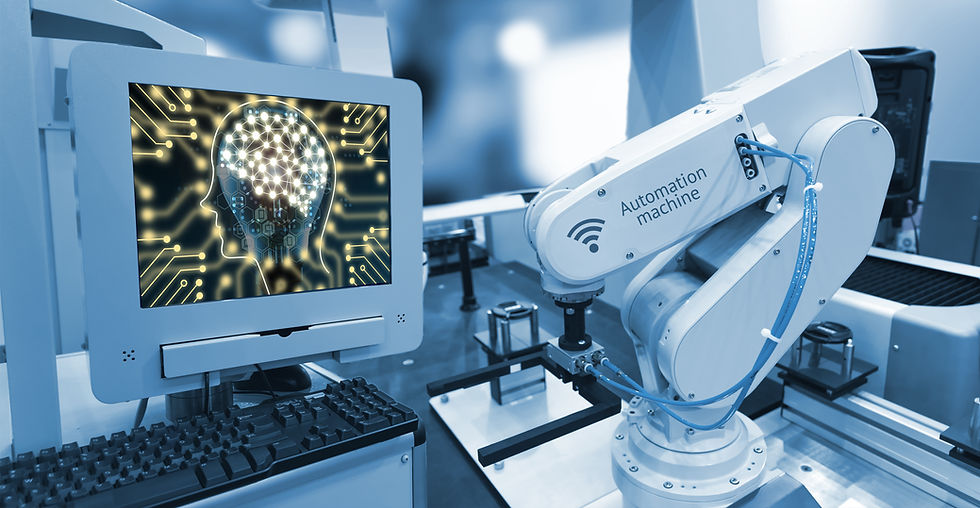White Paper: Preparing Your Business for Quantum-Safe Cryptography in the Era of Quantum Computing
- Srihari Maddula
- Dec 14, 2024
- 4 min read
Updated: Oct 14
Introduction: The Dawn of a Quantum Revolution
Quantum computing has reached a pivotal moment. On December 9, 2024, Google unveiled its “Willow” chip, showcasing unparalleled advancements in error correction and computational power. This milestone brings quantum technology closer to mainstream application, unlocking transformative opportunities in optimization, material science, AI, and smart infrastructure development.
However, these advancements also introduce a significant cybersecurity concern — the potential for quantum computers to break traditional encryption protocols such as RSA and ECC.
This white paper explores why businesses, IoT product engineers, and smart infrastructure providers must act now to protect sensitive data. It focuses on quantum-resistant cryptographic algorithms, their integration with IoT systems like LoRaWAN, and practical steps for future-proofing smart cities, industrial automation, and embedded systems.
Bit vs Qubit: The Core Difference
Unlike classical bits that exist in binary states (0 or 1), qubits leverage quantum superposition and entanglement, enabling exponentially higher computational capabilities. This is the foundation of quantum computing’s disruptive potential—and the reason why cryptographic models must evolve to keep pace.

Quantum Computing: Progress, Promise, and Peril
The Willow Chip’s Breakthrough
Google’s Willow chip has set a new benchmark in quantum hardware engineering. By using logical qubits with drastically reduced error rates, it accelerates the path to fault-tolerant quantum computing.This evolution enables breakthroughs in:
AI-driven material design
Drug discovery
Financial modeling
Quantum cryptography and data protection
For industries pursuing AI in smart infrastructure, GeoAI, or AI-powered embedded systems, this progress holds transformative promise — but also deep security implications.
The Quantum Threat to Encryption
Quantum computers can exploit Shor’s algorithm to break RSA and ECC — the cornerstones of current digital authentication, banking security, and IoT device encryption. Once quantum systems reach utility-scale performance, existing encrypted data will become vulnerable.
This creates a pressing need for quantum-safe cryptography across embedded systems development, IoT product engineering, and smart city infrastructure.
Harvest Now, Decrypt Later
A rising cyber strategy known as Harvest Now, Decrypt Later (HNDL) involves attackers collecting encrypted data today to decrypt it later using quantum computers.
This is a serious concern for industries managing sensitive IoT data, such as smart poles, urban infrastructure digitalization, industrial IoT, and AI-powered monitoring systems.Unless protected by post-quantum cryptography (PQC), even encrypted communications today could be exposed tomorrow.
The Role of NIST’s Quantum-Resistant Algorithms
In July 2024, the National Institute of Standards and Technology (NIST) finalized its first set of quantum-safe cryptographic standards, ensuring resilience against quantum decryption.
Kyber (Key Exchange)
A lattice-based algorithm designed for secure key exchange.
Ideal for IoT and embedded systems, especially in smart city solutions and industrial automation.
Dilithium (Digital Signatures)
Offers high-performance authentication suitable for IoT product engineering.
Enables scalable deployment in AI and smart infrastructure platforms.
SPHINCS+ (Digital Signatures)
A stateless hash-based signature scheme emphasizing long-term quantum resistance.
Perfect for firmware integrity verification and secure OTA updates in embedded AI systems.
These algorithms form the foundation for quantum-safe encryption, enabling AI and IoT integration within secure, scalable architectures.

Compute Evolution Demands Cryptographic Evolution
As quantum computing accelerates, cryptographic systems must evolve in parallel. Businesses embracing AI-powered embedded systems and edge AI in smart devices need to integrate quantum-safe frameworks proactively, ensuring long-term security and regulatory readiness.
Integrating Quantum-Safe Cryptography into IoT Systems
Case Study: Quantum Security in LoRaWAN Projects
At EurthTech, we have deployed multiple secure IoT architectures leveraging AI-driven data analytics and post-quantum cryptographic foundations.
In one LoRaWAN-based industrial IoT project, asymmetric encryption was implemented to protect data from edge sensors to gateway nodes. This system ensured end-to-end protection against evolving cyber threats.
Transitioning such infrastructures to quantum-safe encryption requires a phased, technically aligned approach:
Algorithm Replacement:Replace RSA/ECC with Kyber for secure key exchanges and use Dilithium for device authentication.
Firmware Updates:Deploy post-quantum cryptographic firmware through secure OTA updates on IoT devices and smart poles.
Hardware Adaptation:Optimize embedded microcontrollers and SoCs to handle quantum-safe encryption efficiently.
Comprehensive Testing:Validate interoperability, latency, and security in real-world smart infrastructure environments.
Why Act Now: The Business Case for Quantum Safety
Data Exposure Risks:Storing sensitive data with outdated cryptography invites future breaches. Quantum decryption may expose years of data logs and communication.
Regulatory Pressures:Governments and global cybersecurity frameworks are preparing to mandate post-quantum compliance for smart city technology partners and IoT vendors.
Reputation and Trust:Implementing quantum-safe cryptography strengthens customer confidence, brand reliability, and infrastructure resilience — crucial for digital transformation initiatives.
How EurthTech Can Help
As a Smart City Solutions Provider and leader in IoT Product Engineering and Embedded Systems Development, EurthTech helps businesses transition securely to the quantum era.
We offer:
Consultation and Security Assessment: Evaluate IoT and embedded systems for quantum vulnerability.
Customized Implementation: Deploy Kyber, Dilithium, and SPHINCS+ frameworks across AI-integrated smart devices.
End-to-End Integration: From firmware to hardware adaptation — including Edge AI in embedded devices.
Ongoing Education & Support: Train teams to maintain quantum-safe environments and align with NIST standards.
Conclusion: Securing the Quantum Future
Google’s Willow chip is more than a technological leap — it’s a wake-up call for organizations worldwide. The age of quantum computing is here, and so is the urgent need for quantum-safe cryptography.
At EurthTech, we bridge the gap between emerging quantum threats and practical, AI-enhanced cybersecurity solutions for smart infrastructure and IoT ecosystems.
Act now to secure your data, protect your infrastructure, and prepare your business for the quantum-secure era.
References and Further Reading
Google Willow Chip Announcement
NIST Post-Quantum Cryptography Standards
“Harvest Now, Decrypt Later” Threat Overview
Kyber, Dilithium, and SPHINCS+ Specifications










Comments